Kerman Rugs
Kermans are the honor and prestige of
Persian Rugs, just like the land of Kerman
that is an honor for Iran as a living museum.
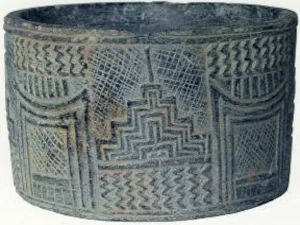
Stone carvings, Jiroft, 5000 B.C
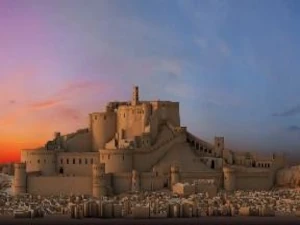
Kerman: The citadel of Arg-e Bam, (sixth to fourth
centuries BC)
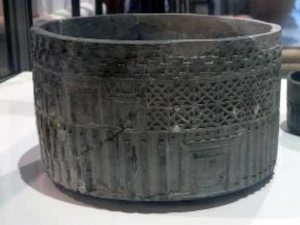
Stone carvings, Jiroft, 5000 B.C
From the very beginning of the Written
History the region has been mentioned under
the name of Aratta by Sumerians (according
to some rather persuadable theories about
that far ancient civilization). Sumerians mentioned Aratta as a wealthy
land hard to reach full of precious stones and
with great artisans to use them. A land Inanna
comes from; the goddess of love, desire and
beauty.
Actually the Jiroft-culture remains in the
Kerman province tell us about a wealthy
early Bronze Age civilization, located between Mesopotamia and Indus Valley
Civilizations.
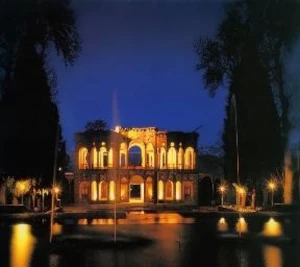
Shazdeh Mahan Garden
Still hard to reach, the land continued its
importance under the name of Carmania in
more clear parts of the ancient history as an
Achaemenid satrapy, and the name continued
its presence through the history till now in
New-Persian: Kerman. The land of rich
mines, exquisite crafts and great artisans.
Home to the goddess of beauty who walks on
embroidered rugs.
The city of Kerman had been a shawl
weaving center for centuries. It is known that
the Safavid Shahs of Persia had established
some of their royal rug workshops in Kerman, (what has remained from 17th and
18th centuries are today the most celebrated
pieces of the so-called Islamic Arts by
museums and auctions, including the two
first record-breakers of the category), but it
wasn’t until the 19th century that Kermani
weavers shifted totally from shawls to rugs
and made a turning point in the Persian rug
history.
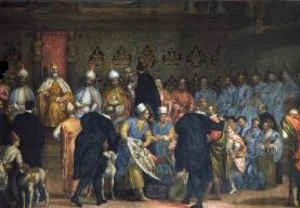
The gifts ShahAbbas sent to the Serenissima court
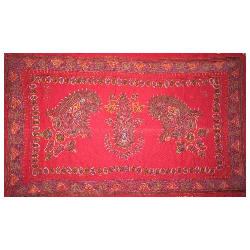
Kerman's Patteh
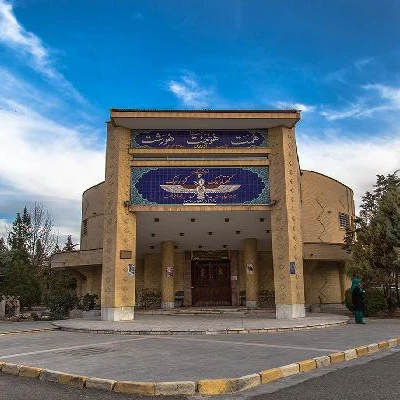
Museum of Zoroastrians
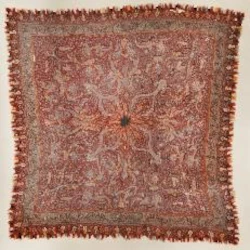
Kerman Embroidered Shawl
Technical aspects and the structure of Kerman Rugs
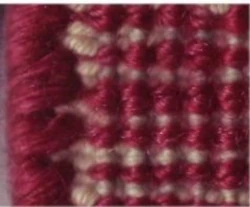
Kerman rug, rear side: white strings are thick wefts,
red strings are knots
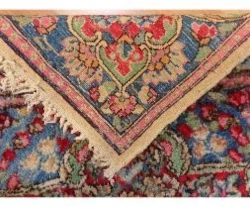
Antique Kerman rug, rear side
Today what we call Kerman rugs are mostly
city-woven pieces made in the workshops of
Kerman and towns around from which Ravar
should be mentioned as the most important
name after Kerman itself, which is
unfortunately famous in English with a
corrupted spelling: Lavar. Experts categorize
‘Lavars’ roughly as the finest Kermans.
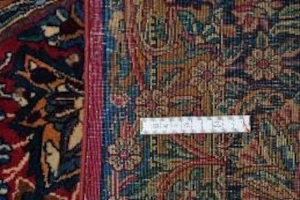
Kerman knots are asymmetrical (Persian) and
triple-wefted. The finest pieces’ knot count
reaches to 510,000/m2. Warp and weft are
cotton and pile is woolen.
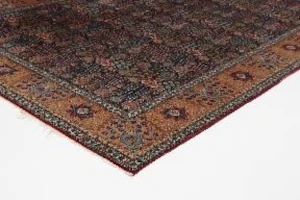
Antique Kermans were benefited from Kork
(also known as Kerman wool) which is the
most special Iranian textile raw material. It is
a fine and thin but not fragile hair sheared off
a breed of goat native to Kerman. Shearing
must be done in spring and just the soft hair
of inner layers are gathered as kork.
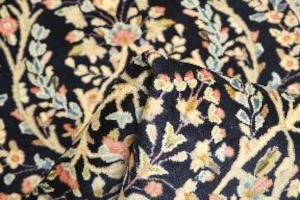
For centuries kork was used for warm shawls
and fine courtly rugs but during 19th century,
with the increased demand for Kerman rugs,
it became an essential raw material for fine-
woven rugs, in both Ravar (Lavar) and
Kerman. Using kork made Kerman’s
weavers able to apply tiny curvilinear
patterns in their detailed designs without
losing the needed strength.
Dyeing and painting of Kerman rugs
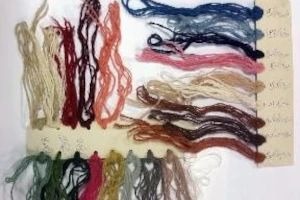
Color palette used in Kerman rugs

Arjomand rug-weaving factory in Kerman is one of
the most well-known which has made some of the
royal rugs
Kerman’s master dyers and painters have a
vital role in the fame Kerman rug gained.
Their wavering colors touch deeply the
viewer’s soul.
Indigo, cochineal, walnut, weld,
pomegranate, vine leaves, straw, and henna
are some natural dyestuffs by the use of
which Kermani masters make uncountable
tones and shades ideal for loom-drawing
painters to create their magnificent pastel
colorings. To obtain a level hue, master dyers
dye the wool before spinning.
Kerman’s reddish tones are remarkable being
obtained mostly from cochineal and not
madder which is used in Heriz or other parts
of western Iran.
Designs and patterns of the Kerman rugs
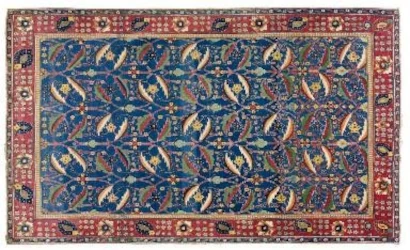
Kerman rug, Safavid period, sold at Christie’s
auction
Master designers of Kerman are da Vincis
and Michelangelos of the Orient. They were
the very first rug designers who put their
signatures on rugs, celebrating their personal
creativity. They have influenced not only
other Iranian designers (such as designers
from Yazd, Isfahan and Khorassan) but also
Indians, Pakistanis, Afghans and Romanians.
Most of basic Persian designs have their
Kerman’s interpretations. Actually some of
them are believed to be originally from
Kerman, like vase design. Repeating
patterned designs are favored. Both central
and all-over medallion designs are woven,
the latter mostly for western markets.
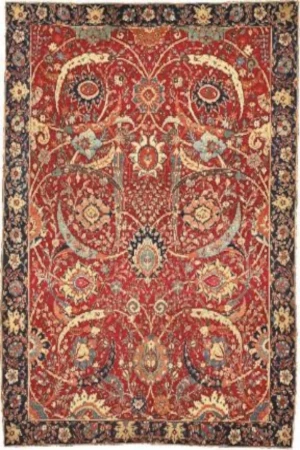
Kerman rug, Safavid period, known as Sickle-leaf
sold at Sotheby’s auction
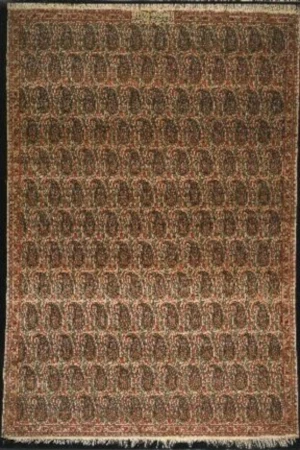
Kerman (Rāvar) rug, repetitive pattern, botte design,
19th century
Botteh, which is an ancient Iranian motif, has
been derived mainly from Kerman shawls,
being adopted to lots of woven goods. Although wide in range, Kerman designs
have a strong feature in common: being fully
floral. Every branch of a tree in a prayer
design (or every spray of a bush in a vase
design) is covered with flowers, leaves and
blossoms. Finding empty spaces between
patterns is literary a difficult task. Even
pictorial rugs enjoy detailed floral patterns on
their margins.


